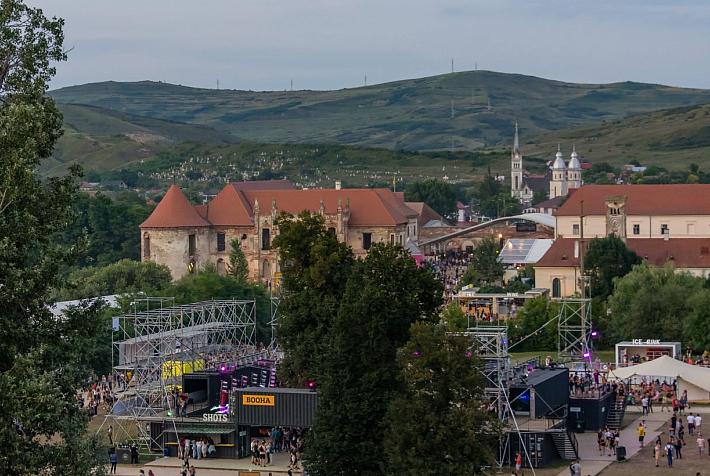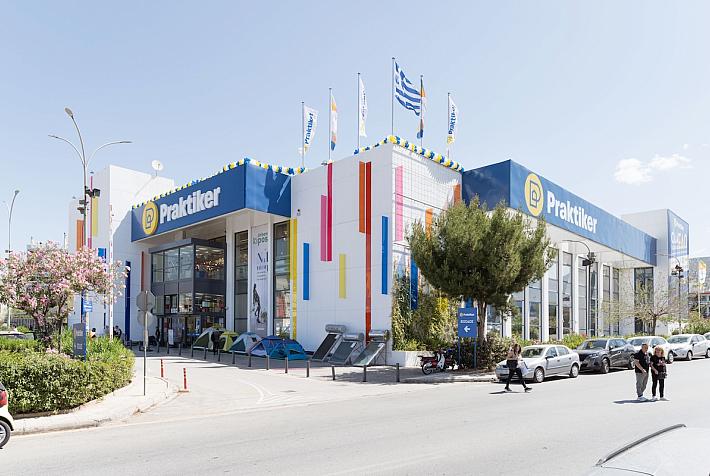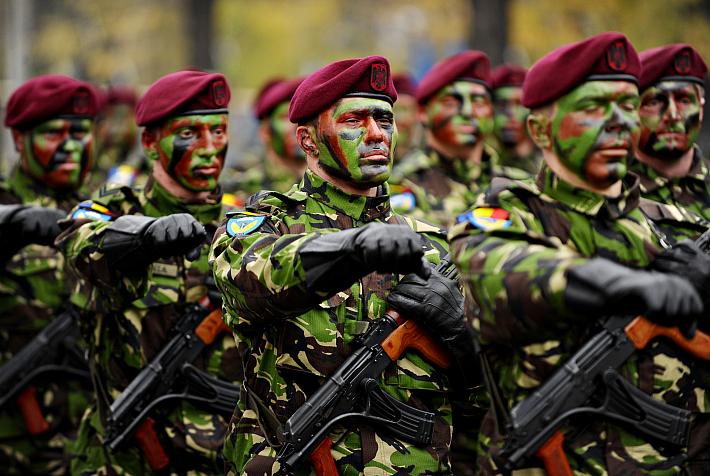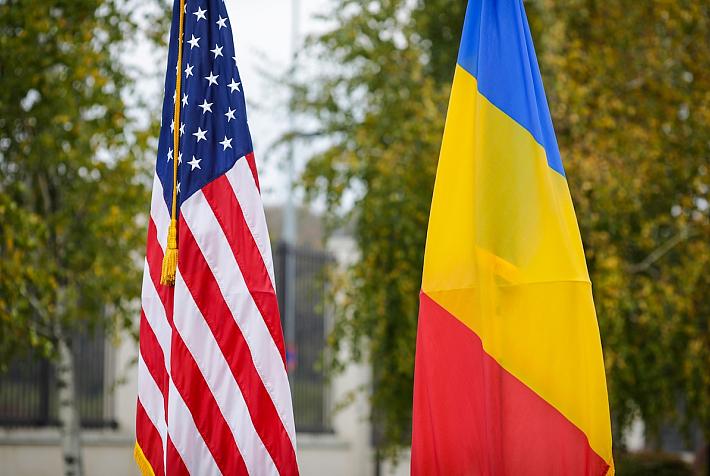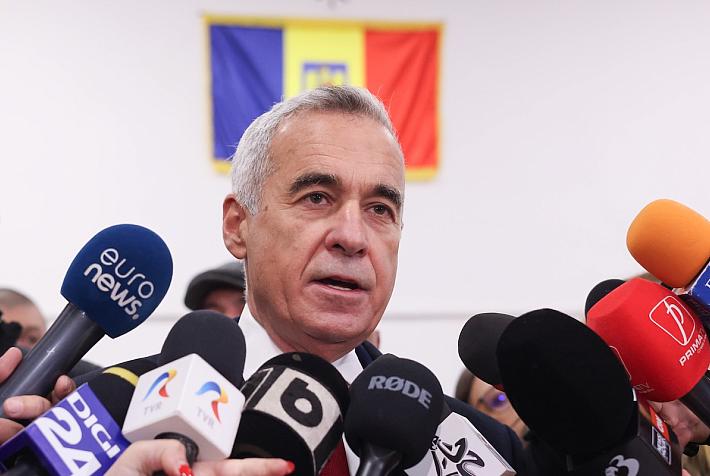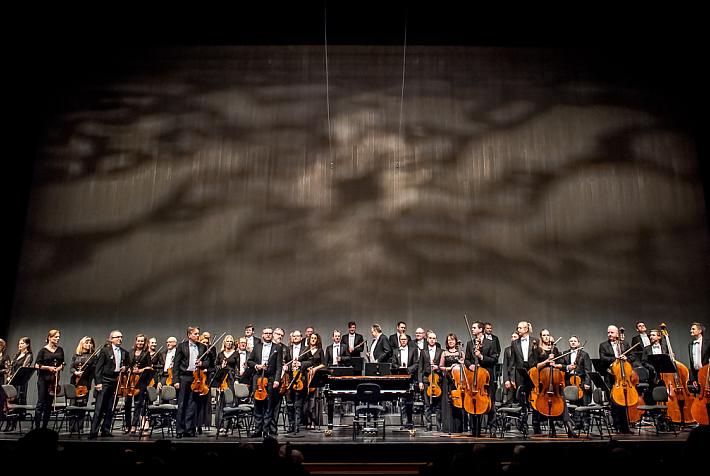Life on the move with Christophe de Korver
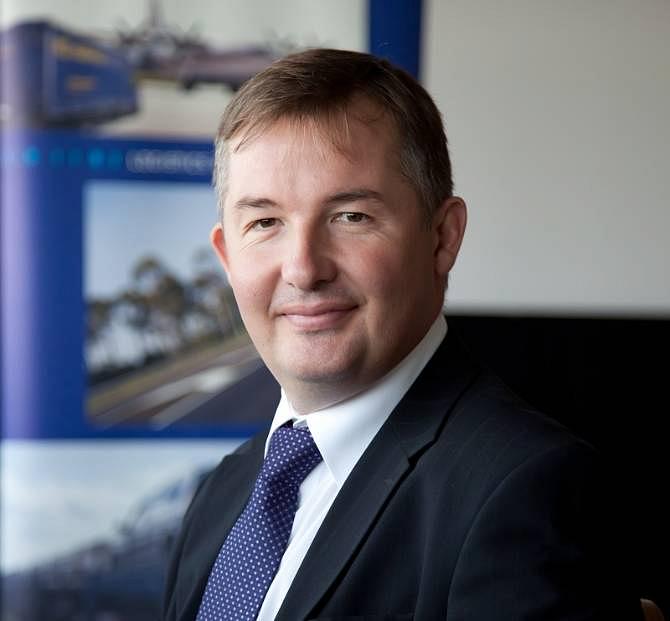
A Frenchman by birth and an international by trade speaks about his new adoptive country, Romania, where he’s running a large logistics business, and where he got to discover beautiful, unexpected places, as well as less desirable traits.
Christophe de Korver doesn’t call himself a Frenchman. But rather an European or an international: as though he was born in France, he has spent most of his life in other countries - UK, the Czech Republic, Slovakia and, now, Romania.
Unlike other people, whose place of birth is one of the main anchors in life, de Korver’s main constant is movement. He works in an industry that moves things from one place to another. He also likes to travel. His desire for human connections and for meeting new people also drove him to this career path and lifestyle.
Born in France, Christophe moved with his family to London when he was 4, returned to Paris at 12, but then left to Marseille to study engineering. His father was Dutch and worked in shipping, which probably also contributed to his career decision.
“As a child I wanted to be a pilot. I did the studies for that, but I failed the physical tests as I needed to wear glasses,” says Christophe de Korver. So he chose logistics.
“Logistics is a mixture between engineering and sales. I studied engineering, but I didn’t want to work in a lab. I needed human contact, so I chose this. I’ve been in this business since I was 25, which was 21 years ago,” he said.
Christophe moved to Prague in early 1998, to run the local operations of another French logistics company. Then he was recruited by Gefco to run their Czech operations. He ended up spending about ten years in the Czech Republic, which became his second home.
“While I was based in Prague, I visited all the countries in the region except one. For some unknown reason, I never went to Romania. I was just convinced it was just like Bulgaria or Ukraine,” he recalls.
After spending a couple of years at the Gefco headquarters in France, de Korver felt the need to move again.
“I told them that I’m a multicultural person and that my value added is abroad. So when the opportunity came, it was the first thing they proposed me, I said: ok let’s try.” That first thing was Romania.
De Korver saw a good job opportunity in this move, as Gefco’s business in Romania developed differently than in other countries, where it was tied to that of French carmaker PSA-Peugeot Citroen. In Romania, Gefco built a relationship with the other big French carmaker, Renault, which was something new. However, he had no idea what to expect from the country.
“There was a shock for me because I was expecting something so different. When I arrived it was July, so you can imagine it was hot and dust everywhere. For me, this was not Eastern Europe, it was Italy or Spain.”
For the last four and a half years, he has been running Gefco Romania, the local subsidiary of French logistics group Gefco, which he turned into one of the local market leaders. Although he’s not satisfied with the slow pace of things in Romania, especially in developing infrastructure connections, he’s happy that he managed to increase the business and that he had the chance to experience new things in the country.
“When I arrived here I had the feeling I was in a grocery store. Now we are in a supermarket or even a hypermarket.”
This is how Christophe de Korver describes the evolution of Gefco’s business in Romania in recent years. With him at the helm, Gefco’s local business doubled, from EUR 23 million, in 2009, to EUR 47 million, in 2013.
“We are growing at least 10% every year. It is not so much related to the local economy, but we do a lot of international projects. Romania is one of the most attractive countries in the region in terms of logistics.”
Gefco Romania currently runs two logistic warehouses, one in Bucharest and one close to Arad, and several logistics platforms dedicated to big clients, such as the Dacia car factory in Pitesti and the Ford car and engine factory in Craiova. Gefco takes care of a big part of Dacia’s car exports to Western European markets.
The group also serves clients in the automotive industry located near Timisoara and Arad, such as Delphi and Valeo, and customers in the consumer goods industry, such as Electrolux and IKEA. It is currently trying to develop its operations in the agricultural sector.
Logistics are a complex business that won’t let you get bored, as de Korver explains. “Ten years ago I would tell you I only do transport. Today we are talking more and more about supply chain than about transport and logistics.” He adds: “Here in Romania we have some customers for which we do only transport. We have customers for which we do the management of their goods, and now we are going to start with a client for which we are going to print and sign invoices, so when his clients file a complaint, they will deal with us. This is the maximum we can do today in terms of supply chain management.”
Clients are very demanding when it comes to the security of their goods. Some customers are not only interested in having their supplies or their products go from one place to another during a particular period; they want to know where their cargo is at any moment.
This is why, for logistics groups such as Gefco, choosing their subcontractors and monitoring their activities are also essential parts of the business. Gefco doesn’t have its truck fleet in Romania, but instead works with smaller local firms.
“Daily we must be handling 100 trucks altogether. We try to have many regular partners, as the monitoring process is easier. It’s more work when we have new partners. It takes about 5-6 months to get to know them,” Gefco’s manager explains.
“There is always this risk that one of our suppliers becomes our competitor. We work in general with smaller transporters, who have 10, 15, 20 trucks and not a substantial sales capacity.”
As if this were not complex enough, Gefco Romania also manages Romanian truck drivers who work for Gefco Germany. “For Gefco Germany we subcontract Romanian trucks which most of the times drive only in Germany or between Germany and France. We do that because they don’t have that many drivers and don’t have flexible drivers.” De Korver says it’s not about costs, but about human resource flexibility. “Every Friday a German driver wants to get back home, and a French one would like to do that on Thursday evening if possible. Romanian, Polish, Slovak drivers are more flexible,” he explains.
Growing operations also require a bigger team, and in the last five years Gefco’s local team also increased from about 70 to almost 100 people.
However, finding the right people is not an easy job. “In Romania there is no real logistics and transport education. We need people who are trained in logistics and transports, not only at a high level but a middle level. This is a challenge as we grow,” de Korver says. “What we do is take youngsters from universities. We train them and try to keep them.”
Another big challenge is dealing with the poor infrastructure in Romania: getting from the Eastern Black Sea port of Constanta to the Western border point of Nadlac takes an average of 10 hours, for a distance of little over 800 kilometers.
“This is a real issue and this is one of the constraints for me to develop operations in Constanta, because Constanta will only develop when it will have a better connection to the rest of the country. When I have to ship something from Timisoara, I always have to compare solutions through Constanta or Koper in Slovenia as the transit time is the same,” de Korver explains.
“I’m always surprised that there is no real plan, each government comes with a new master plan and changes everything,” he adds, referring to the many changes in Romania’s highway projects.
“I have this joke I always tell my colleagues: I’m in Timisoara and I have a meeting in Vienna; I take the car and I’m there in five hours. I’m in Timisoara and I have a meeting in Iasi; I have to take two planes to be there in five hours and then I have to get my bosses to validate why I took two planes inside of the country.”
“Romanians are very much inspired by Italians while Czechs follow the Germans.”
This is how Christophe de Korver would sum up the cultural difference between the two people. Having lived for almost ten years in Prague before he came to Romania, he saw more differences than similarities between Czechs and Romanians.
His first remark is not very flattering to Romanians. “I think Romanians are very individualistic while the Czechs are more interested in community. This is one thing I was always surprised to see when I arrived here. You go to visit someone and inside he has a nice house, but outside he dumps everything, he doesn’t care how things are. In Prague, things are different. The Czechs say ‘we want people to come to our country, so our country needs to look beautiful.’ Romanians want to show off a bit: see my big TV, my living room, but outside they don’t care,” he says.
This also tends to be a problem for companies, de Korver found while managing Gefco Romania. “You have many success stories, with very smart people who have been able to grow, but companies are not made only of stars. Businesses need to have people who work together, and I’ve had pretty tough tasks in making people work together. It works in the end, but it’s not in people’s genes. ‘What is good for me is just for me’ – this is in the genes.”
However, Romanians compensate for their lack of team skills with their creativity and flexibility. “One great thing I like about Romanians is that they adapt fast. You won’t have a Czech guy adapt. If he does something good, he will continue doing it the same way. In Romania, even when something works well, you will have the guy come at you and say: what if I do this? Which can also create a mess. But what I’m really proud of is that when I came here of the nine board members only one had to go, the rest remained and it’s very important that we adapted.”
While individualistic by nature, Romanians love big, noisy parties, unlike the Czechs. “Take a wedding. In Romania, this means a minimum of 200 people. In the Czech Republic, the maximum is 50. They want to be with their little family, their close friends. But I enjoy weddings in Romania a lot.”
This is why he concludes that Romanians are very much inspired by Italians while Czechs by the Germans. “When you go to the airport in Prague you see every one hour a plane going to Germany, in Bucharest you see every one hour a plane going to Italy.”
“Romania is a country of many unexpected places than one needs to experience.”
Although he knew close to nothing about Romania before coming here, Christophe de Korver was determined to discover the country and experience its best. “I had a checklist four years ago when I arrived, with all the things I wanted to do. I added many things that I’ve discovered in the meantime.”
His favorite place in Romania is the Danube Gorge, a place where the Danube makes its way through the mountains, also known as “Cazane”. “I knew nothing about this but a couple of colleagues told me I must go. They gave me the name of a pension but when I arrived it was raining, and I couldn’t see anything. And then next morning I woke up, a very sunny day, and I was directly on the Danube with the mountains behind. It was incredible!”
Another must see in Romania is the Delta, he says. “It reminds me of the Everglades in the south of Florida. It’s incredible to see that we have such a place in Europe, because when I was younger, and I went to the U.S. I thought that was unique.”
In terms of mountains, there are some places which are also impressive. “I like Bucovina. It’s one of the places you must go and see for yourself. Many people would tell me that Moldova is poor, but when I went to Bucovina I saw no sign of poor people there,” de Korer says.
Among his other memorable moments in Romania he remembers a seven-hour night train ride from Bucharest to Suceava, in the north of Romania, a night spent in the ice hotel at Balea lac, as well as spending one night in a tree house near Predeal, all new and very unusual experiences for him.
Seeing so many beautiful places in Romania, de Korver was surprised to find out that many Romanians are not proud of their country and many of them leave without planning a return.
By Andrei Chirileasa, andrei@romania-insider.com






